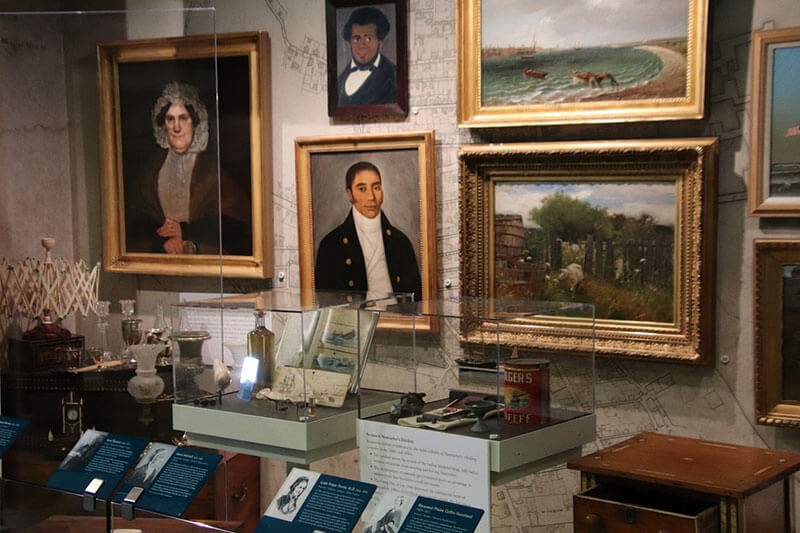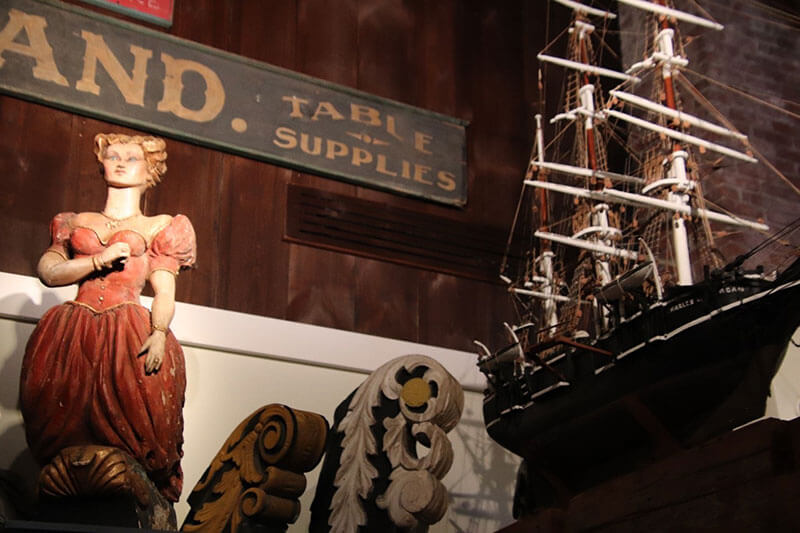
The stories of Cape Cod’s women at sea are not widely known. The salty history of Cape Cod is full of the names of sea captains and their tales of traversing the navigable waters of the globe. The Historic Old King’s Highway (route 6A) and most village centers on the Cape are dotted with historic sea captains’ homes named for their owners. Names like Crowell, Ryder, Sears, Nickerson, and Doane are still common on Cape Cod, having been passed down among generations of Cape families.
Long before the Cape’s pristine beaches, bike paths, kettle ponds, and clam shacks drew throngs of visitors, those who sailed ships on the sea built the Cape’s economy and established its reputation worldwide, and Cape Cod’s women at sea played a vital role. In the seventeenth and eighteenth centuries, trade routes were typically limited to ports around New England or as far away as Long Island. These trips were brief – a few days away at a time, and while it was not uncommon for women to sail on these short journeys, they did so to shop for goods unavailable on Cape Cod or as companions to other women.

The Hunt for Whales Changes the Role of Women at Sea
In the nineteenth century, the booming whaling industry on Cape Cod saw more women joining their husbands at sea for extended journeys. In his book about the history of Cape Cod’s Women at Sea, “Sail Away Ladies,” Jim Coogan writes that upon arriving on Cape Cod, settlers learned to hunt whales from the Cape’s indigenous people. It was a Cape Cod man from Yarmouth who traveled to Nantucket in the mid-seventeenth century to teach islanders to chase whales.
Before the nineteenth century, whaling ships spent three to four weeks at sea. As the whale population dwindled, whaling ships traveled as far away as Chile, South Africa, and Japan in search of the massive creatures and the valuable oil harvested from their blubber. It was now common for whaling ships to be at sea for three to five years.
Sea Captains recruiting sailors to join these expeditions relied upon boys as young as 13 or 15 searching for adventure and fortune. Some captains employed unscrupulous tactics to round out a crew, known as “crimping” or “shanghaiing.” “Crimpers” would kidnap or coerce people to serve as sailors with threats of intimidation or violence.

Sea captains were the only parties growing rich on whaling ships. Crew members were often enticed with promises of wealth, only to return after a grueling journey with barely enough funds to cover their expenses. This dynamic, combined with harsh conditions, illness, fighting, and the constant threat of storms or hurricanes at sea, could set the stage for mutiny. Having a woman on board was considered a calming, “goodly” presence and often deterred a hostile crew from threats of rebellion because sailors did not want to kill the husband of the only woman on board.
Setting Sail to Preserve a Traditional Marriage
The expectations and the desires of many of Cape Cod’s women at sea were that they would join their husbands aboard their ships. These women were not making a progressive feminist statement or seeking international travel and adventure by setting sail for years at a time with their husbands. They were doing their best to create a stable, traditional family life for themselves and their children.
Young, newly married women would pack their belongings and board whaling vessels with their husbands and rowdy crews of sailors. The only women on these ships, at sea for months or years, Cape Cod’s women at sea endured seasickness, endless work, and violent storms, but they also gave birth and raised and supervised babies and toddlers amidst the chaos of day-to-day life on a whaling ship. In “Sail Away  Ladies,” Jim Coogan tells the tale of Clara Cook Ryder of Provincetown, who, at twenty-six years old, made a twenty-seven-month voyage with her husband and two boys ages five and two into the Indian Ocean. In her journal, she wrote about her frustration in being unable to keep her children clean when the crew was flensing massive whales on board the ship. “I sewed and knit some, but everything is so black and dirty that I cannot do much but wash the children as they are a blue-black most of the time. But I do not mind the dirt if we can only get the oil.”
Ladies,” Jim Coogan tells the tale of Clara Cook Ryder of Provincetown, who, at twenty-six years old, made a twenty-seven-month voyage with her husband and two boys ages five and two into the Indian Ocean. In her journal, she wrote about her frustration in being unable to keep her children clean when the crew was flensing massive whales on board the ship. “I sewed and knit some, but everything is so black and dirty that I cannot do much but wash the children as they are a blue-black most of the time. But I do not mind the dirt if we can only get the oil.”
How Many Women Sailed with Their Sea Captain Husbands?
In 1817, Nantucket’s Mary Russell may have been one of the first women to join her husband on an extended voyage taking her to sea on her husband’s ship, “The Hydra,” for three years. Her experience opened the door for other women to join their husbands on these journeys. According to Jim Coogan, it is estimated that by 1850 in coastal communities from Long Island to Maine, one in four sea captains was accompanied aboard his ship by his wife.
It Wasn’t All Seasickness, Hard Work, and Threats of Mutiny
Many of Cape Cod’s women at sea treasured their time at sea with their husbands. They penned descriptions of their living quarters at the rear of these formidable ships as beautifully appointed and significantly more elegant than their homes on land. The captain’s family quarters were off-limits to crew members, and some were decorated to resemble a high-end Victorian home. Captains’ wives could sit in their cozy quarters and enjoy the warmth of a fireplace and stunning views of the sky and sea while their children played with exotic pets collected at foreign ports. Still, months or even multiple years away from family and friends could take a toll. The isolation and loneliness the women experienced could be all-consuming. They had to navigate their role with the ship’s crew. The sailors could embrace the captain’s wife as a calming, feminine presence, or if they felt that she wielded too much influence and power, they could make her life miserable with their resentment and hostility.
Cape Cod’s Women at Sea, Partners in Building Family Life and Fortunes
The stories of Cape Cod sea captains and the partnerships they forged while sailing with their dedicated wives, Cape Cod’s women at sea, reveal volumes about the grit and perseverance that fueled the maritime’s golden age. Like the beautiful, sturdy sea captains’ homes that contribute to the culture and beauty of the Cape today, the spirit of the men and women who built their lives and their families around the sea remains.



